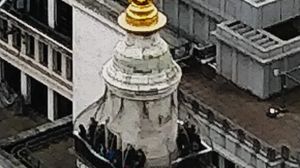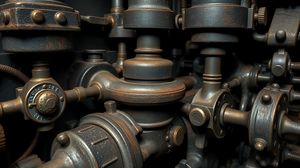
Located in the heart of the City of London, the Billingsgate Roman House and Baths offer a unique glimpse into ancient Roman life in the capital. Discovered in the 19th century, these remains date back to the 2nd and 3rd centuries AD, showcasing the sophisticated design and engineering of the Roman Empire.
The site reveals remnants of a Roman house with beautiful mosaic flooring and intricate hypocaust systems utilized for underfloor heating. This innovative heating method highlights the advanced technological prowess of the Romans, who were able to maintain warm temperatures within their settlements even during the chilly British winters.
While the presence of Roman baths might lead you to believe that this was a site of public leisure, it's thought that these baths were private. This suggests that the site belonged to a wealthy Roman family who could afford such luxurious comforts for personal use.
One fascinating element of Billingsgate Roman House and Baths is the small finds discovered during excavation, including pottery, coins, and fragments of frescoes. These artefacts help paint a vivid picture of daily life in Roman London, offering a tangible connection to the past.
The location itself was strategically significant during Roman times, positioned near the River Thames. This proximity would have provided easy access to trade routes, essential for the economic prosperity of any high-status Roman household.

Making the Most of Your Visit:
Make sure to take some time to closely examine the mosaic flooring, which is quite a work of art. These intricate designs give you a real sense of Roman aesthetics and craftsmanship, and considering their age, they're remarkably well preserved.
Don't miss learning about the hypocaust system, the Roman underfloor heating method. It's mind-boggling to think about the technological innovation involved in creating such a system nearly 2000 years ago. Try to picture how they kept the rooms warm and how these systems were maintained.
Pay attention to the artefacts on display, especially the pottery and coins. They were daily items for the Romans, and each piece can tell you a story about the trade, economy, and lifestyle of Roman Londinium.
Be aware of the site's location near the Thames, and imagine what it would have been like in Roman times. Standing there, you get a sense of the strategic importance of the spot for accessing trade routes and how bustling that area must have been with commerce and activity.
Use the opportunity to reflect on the fact that these baths were likely private, rather than public. It's a fascinating insight into the wealth and lifestyle of the family that lived here—having such comfort when the majority didn't is quite telling of their status.

Visiting Times & Costs:
The Billingsgate Roman House and Baths is open to the public but only during specific times, generally limited to scheduled tours and special events. Therefore, it's essential to check ahead for available tour dates and times.
Entrance fees may apply for these guided tours. Typically, adults and children are charged separately, with potential discounted prices for seniors or students. Pricing details are subject to change, so confirming in advance is advisable.
Due to the nature of the historic site, there may be accessibility challenges, particularly for visitors with mobility issues. The ancient remains are situated underground, and there are stairs involved in accessing the site. It is recommended to inquire about accessibility accommodations when booking tickets.

Address & Map:

Nearby:























